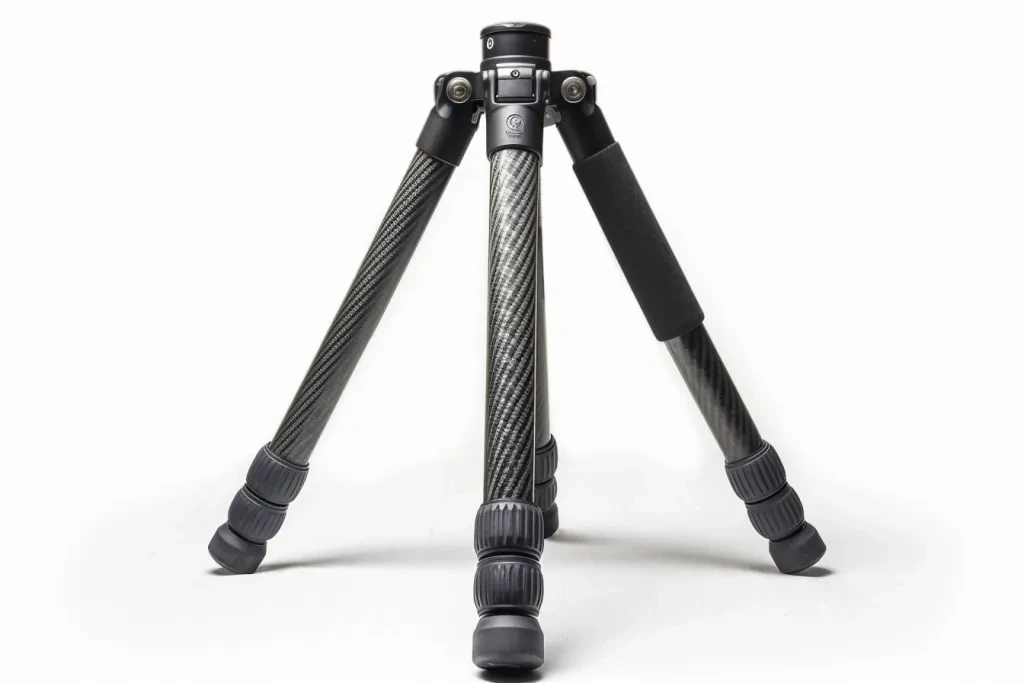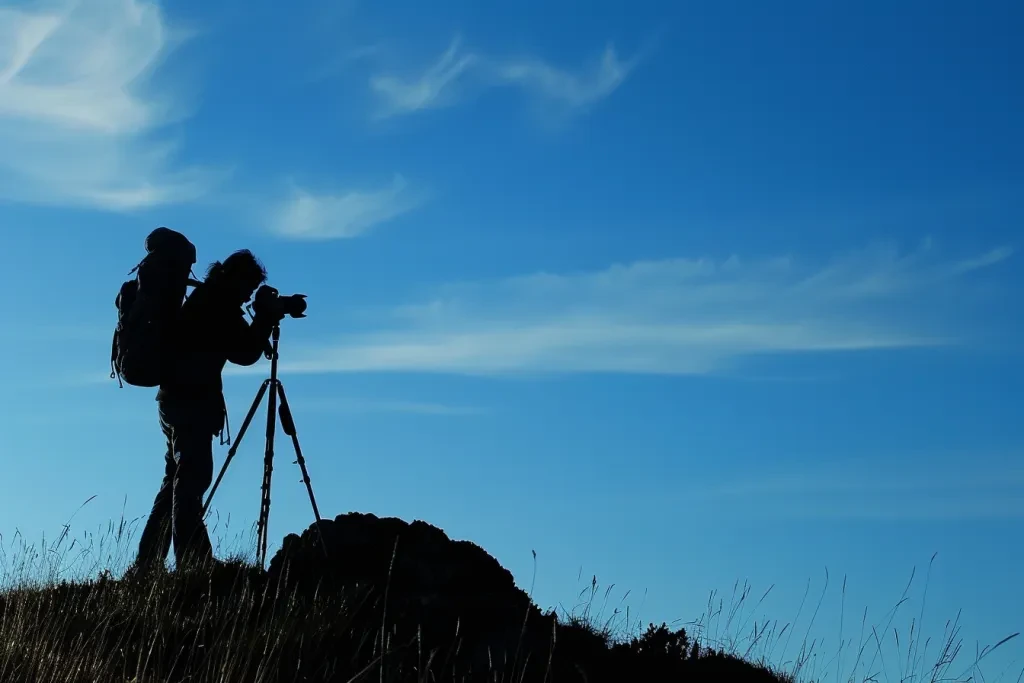In the world of photography and videography, stability is key. A tripod stands as an essential tool for anyone looking to elevate their shooting techniques. This article dives into what a tripod is, its workings, benefits and drawbacks, and guides on choosing and using one effectively.
Table of Contents:
– What is a tripod
– How does a tripod work
– Benefits and drawbacks of a tripod
– How to choose a tripod
– How to use a tripod
What is a tripod

A tripod is a three-legged support device used to stabilize and elevate cameras, video recorders, or other precision instruments. Its primary purpose is to hold these devices steady, preventing movement that could result in blurred images or shaky videos. Tripods come in various sizes, materials, and designs, catering to different needs and environments. From compact, lightweight models ideal for travel to heavy-duty tripods designed for professional studio work, the range available is vast, ensuring there’s a tripod to suit every photographer’s requirements.
The core components of a tripod include the legs, head, and center column. The legs, usually telescopic, can be adjusted to various heights and angles, providing flexibility and adaptability in different shooting conditions. The head of the tripod is where the camera is mounted, and it can come in different types, such as ball heads for smooth movement and pan-and-tilt heads for more precise control. The center column adds an extra level of height adjustment, making it easier to achieve the perfect shot.
Understanding the structure and function of a tripod is crucial for photographers and videographers. It not only helps in choosing the right tripod for their needs but also in maximizing its potential to improve the quality of their work. Whether it’s capturing a breathtaking landscape, shooting a time-lapse video, or taking long-exposure photographs, a tripod is an invaluable tool in the arsenal of both amateur and professional photographers.
How does a tripod work

A tripod works by providing a stable platform for a camera or other device, allowing for sharp, clear images by minimizing movement. The effectiveness of a tripod is largely dependent on its design and the materials used in its construction. Aluminum, carbon fiber, and basalt fiber are among the most common materials, each offering a balance between strength, stability, and weight. The tripod’s legs spread out from a central point, creating a wide base that ensures stability on various surfaces, from uneven outdoor terrains to smooth studio floors.
The adjustability of a tripod is a key feature that enhances its functionality. The legs can be extended or retracted to various lengths, and the angle at which they spread can be adjusted, allowing the tripod to be used in tight spaces or on irregular surfaces. The head of the tripod, which holds the camera, is designed to move smoothly, enabling the photographer to pan and tilt the camera with precision. Some heads also allow for flipping the camera into portrait orientation without losing the framing.
Setting up a tripod correctly is crucial for its effective use. It involves extending the legs to the desired height, adjusting the angle for stability, and securely mounting the camera on the head. Proper setup ensures that the tripod will not topple over, protecting the equipment and ensuring the capture of high-quality images. The combination of stability, adjustability, and ease of use makes the tripod an indispensable tool for achieving professional-level photography and videography.
Benefits and drawbacks of a tripod

The benefits of using a tripod are numerous, particularly in scenarios requiring precision and stability. One of the primary advantages is the ability to take sharp, clear images in low light conditions or when using slow shutter speeds. This is invaluable for night photography, long exposures, and macro photography, where even the slightest movement can blur the image. A tripod also allows for consistent framing, essential for creating panoramic shots or when taking multiple images from the same angle over time, such as in time-lapse photography.
Another significant benefit is the physical relief it provides to the photographer. Holding a camera for extended periods can be tiring and lead to unsteady shots. A tripod takes on the weight of the camera, enabling the photographer to focus on composition and timing without the strain of supporting the equipment. Additionally, using a tripod encourages a more deliberate approach to photography, prompting photographers to consider their shots more carefully, resulting in higher quality outcomes.
However, there are also drawbacks to consider. Tripods can be cumbersome and heavy, particularly the more robust models designed for stability. This can make them inconvenient to carry, especially for photographers who travel or hike to locations. Setting up a tripod also takes time, which can be a disadvantage in fast-moving situations where quick reactions are needed. Furthermore, in crowded places or tight spaces, using a tripod may not be feasible due to the space it occupies and the potential trip hazard it presents.
How to choose a tripod

Choosing the right tripod involves considering several factors to ensure it meets your specific needs. The first factor is the weight capacity; the tripod must be able to support the weight of your camera and lens combination to prevent damage or instability. Material is another important consideration; carbon fiber tripods offer the best balance between strength and weight, making them ideal for those who need durability without the added bulk.
Height is a crucial factor to consider. A tripod should extend to your eye level to avoid having to stoop, ensuring comfortable use. However, it’s also important to check the tripod’s collapsed height for ease of transport. The type of head is another consideration; choose between a ball head for flexibility and ease of use or a pan-and-tilt head for more precise control, depending on your photography style.
Other features to consider include the number of leg sections, which affects stability and compactness; the type of leg locks, with twist locks being more secure but slower to operate than lever locks; and additional features like a reversible center column for low-angle shots. Evaluating these factors will help you find a tripod that suits your needs, balancing stability, weight, and functionality.
How to use a tripod

Using a tripod effectively requires more than just setting it up and mounting your camera. First, ensure the tripod is on stable ground; adjust the leg length or angle as necessary to achieve stability on uneven surfaces. When extending the legs, start with the sections closest to the top to maintain a lower center of gravity and enhance stability. Securely fasten the camera to the tripod head, ensuring it’s tightly attached to prevent any movement.
Composition is key when using a tripod. Take advantage of the stability it provides to carefully frame your shot, paying attention to composition rules and the elements within your scene. Use the tripod head’s movements to fine-tune the frame, and remember to check the edges of your viewfinder or screen to ensure everything is as intended.
Lastly, to maximize the sharpness of your images, use a remote shutter release or your camera’s timer function to avoid any camera shake when pressing the shutter button. This is particularly important for long exposure shots or when using telephoto lenses. With practice, using a tripod will become second nature, significantly enhancing the quality and creativity of your photography.
Conclusion: A tripod is a versatile and essential tool for photographers and videographers looking to improve the quality and creativity of their work. Understanding what a tripod is, how it works, and its benefits and drawbacks is crucial for choosing and using one effectively. By considering factors like weight capacity, material, height, and head type, you can select a tripod that meets your needs and enhances your shooting experience. With the right approach to using a tripod, you can unlock a new level of precision and stability in your photography.




